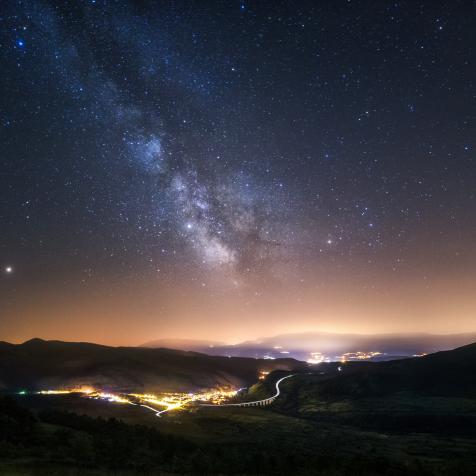
This Footage From the Surface of a Comet is Breathtaking
Imagine the weird environment on a comet. In the light gravity, it's easy to hop and skip. The view is stunning; bright stars surround you, with no atmosphere to make them twinkle. And the best thing? If the comet is close enough to the sun, you'll experience a space blizzard. An amazing animation on Twitter shows the view from the European Space Agency's (ESA) Rosetta spacecraft. It visited a comet between 2014 and 2016. So much dust fills Rosetta's view that it looks like it's snowing.

@landru79/Twitter
Animating from Raw Data
"This is what a view on a comet looks like, among dust, stars and cosmic ray hits," wrote Twitter user and space news follower @Rainmaker1973 while posting the one-second animation on April 24. The animation was shared thousands of times. Fellow Twitter user @landru79 created the animation from raw data posted on the ESA website.
The image set dates back to June 1, 2016, when the Rosetta spacecraft was orbiting Comet 67P/Churyumov–Gerasimenko. Rosetta had a special mission: to follow a comet as it gets closer and closer to the sun. Comets are collections of ice and dust, loosely held together. As the sun's warmth warms a comet's surface, the comet comes alive. Material sheds off its surface. It grows a tail. Sometimes the tail is even bright enough for people on Earth to see it.
Why follow a comet from close up? In part, it's because it's very, very difficult to predict how bright a comet will get. Back in 2013, some astronomers thought a comet called C/2012 S1 ISON would get bright enough to see from Earth in the daytime. So you can imagine the disappointment from amateurs when the comet broke up during a close encounter with the sun, dissipating before the expected show. If we can watch a comet with a spacecraft, people reasoned, we can make better predictions about how it will change when the sun hits its surface.
More Discoveries
But that wasn't the only thing Rosetta did. Comets are important building blocks of our solar system. The ice and materials they contain are remnants of what our solar system looked like billions of years ago before planets were formed. So 67P was a bit of a time capsule. Looking at it showed astronomers an example of an ancient type of solar system body.
Rosetta found a bunch of neat things at its comet. The ice on 67P has a different ratio of hydrogen isotopes (or types) than what we find here on Earth. So in other words, maybe comets didn't bring Earth's water; we might have gotten it from somewhere else. Scientists also found molecular oxygen at 67P, which was a huge surprise. In combination with other data, this suggests the comet was born further from the sun than scientists previously imagined. And those are just two examples of surprising results Rosetta showed us about comets.
"Rosetta has completely changed our picture of comets," said Eberhard Grün, an interdisciplinary scientist working on the Rosetta mission at the Max Planck Institute for Nuclear Physics in Germany, in a statement. "Previously, they were pictured as dirty ice balls — or, as some prefer, icy dust balls — but now we know them, or at least this one, to be geologically complex worlds where a myriad of processes are at work creating the incredible surface structure and activity of the comet."
While the mission is over, Rosetta's legacy lives on. Scientists plumb its data. And the mission inspired a lot of artwork from the public, ranging from clay animations to music to poetry. ESA was so impressed that they created a Tumblr feed showing all of the artistic tributes. It goes to show you that space has so much relevance beyond science; its work affects all of us.
This article first appeared on Curiosity.com.


















